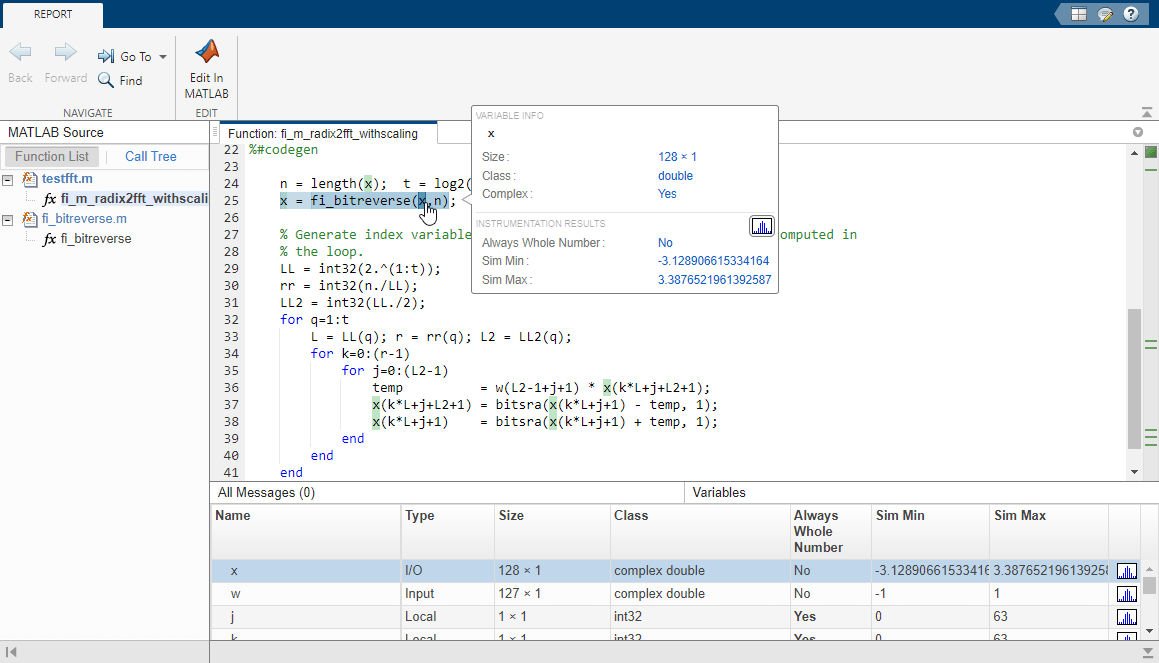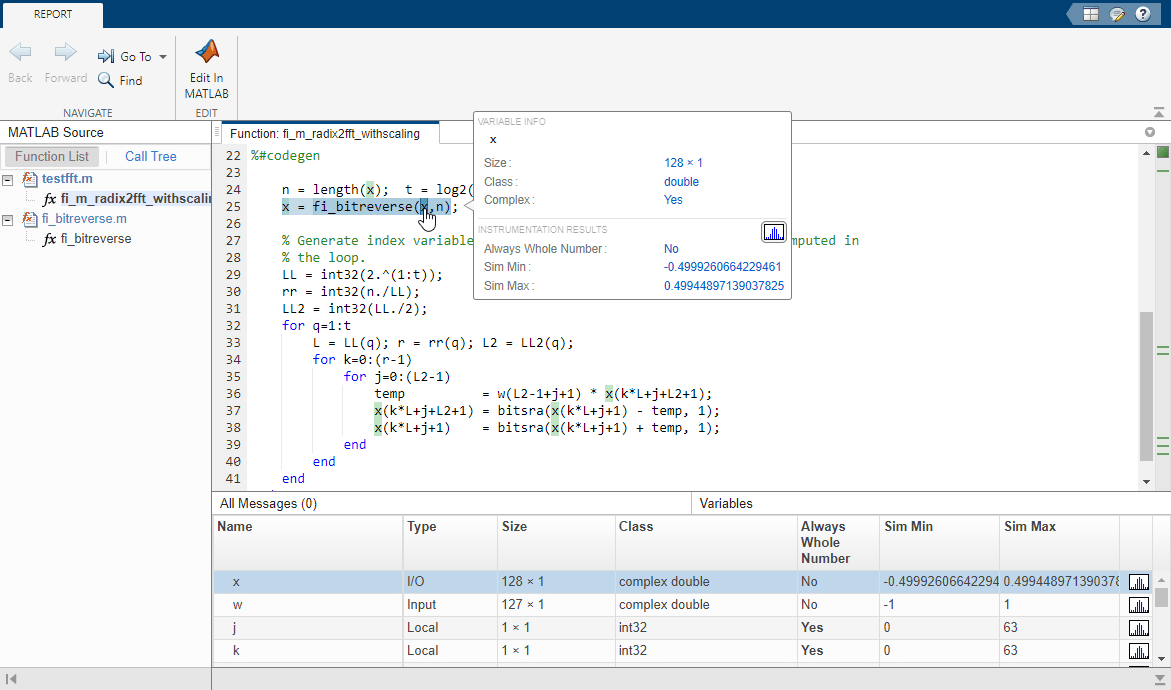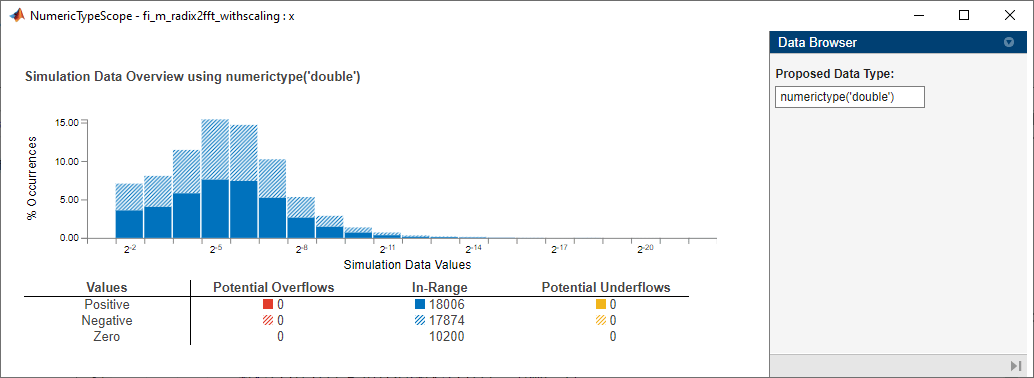showInstrumentationResults
Results logged by instrumented, compiled C code function
Syntax
Description
showInstrumentationResults(' opens
the Instrumentation Report Viewer, showing results from calling the
instrumented MEX function mex_fcn')mex_fcn.
Hovering over variables and expressions in the report displays the logged information.
The logged information includes minimum and maximum values, proposed fraction or word
lengths, percent of current range, and whether the value is always a whole number, depending
on which options you specify. If you specify to include them in the
buildInstrumentedMex function, histograms are also included. The same
information is displayed in a summary table in the Variables
tab.
When you call showInstrumentationResults, a file named
instrumentation/mex_fcn/html/printable.html
is created. mex_fcn is the name of the corresponding instrumented MEX
function. Selecting this file opens a web-based version of the Instrumentation
Report Viewer. To open this file from within MATLAB®, right-click the file and select Open Outside
MATLAB.
The showInstrumentationResults function returns an error if the
instrumented mex_fcn has not yet been called.
Note
The logged results from the showInstrumentationResults function
are an accumulation of all previous calls to the instrumented MEX function. To clear the
log, see clearInstrumentationResults.
Examples
Input Arguments
Version History
Introduced in R2011bSee Also
fiaccel | clearInstrumentationResults | buildInstrumentedMex | codegen (MATLAB Coder) | mex


